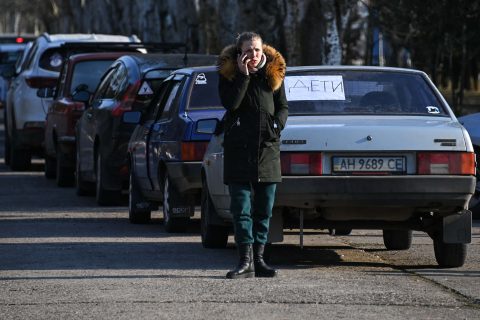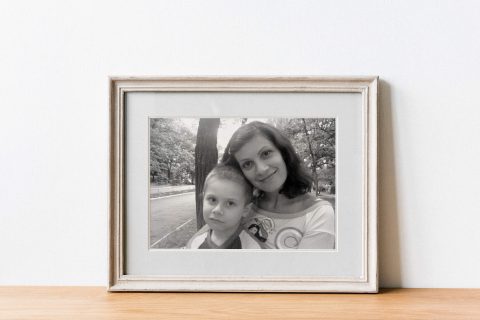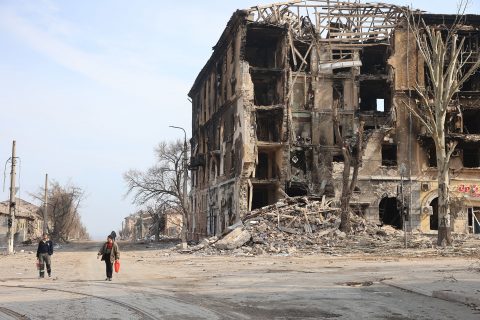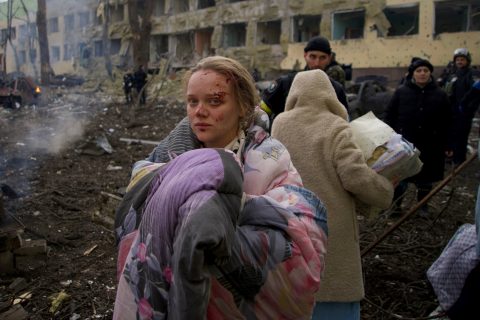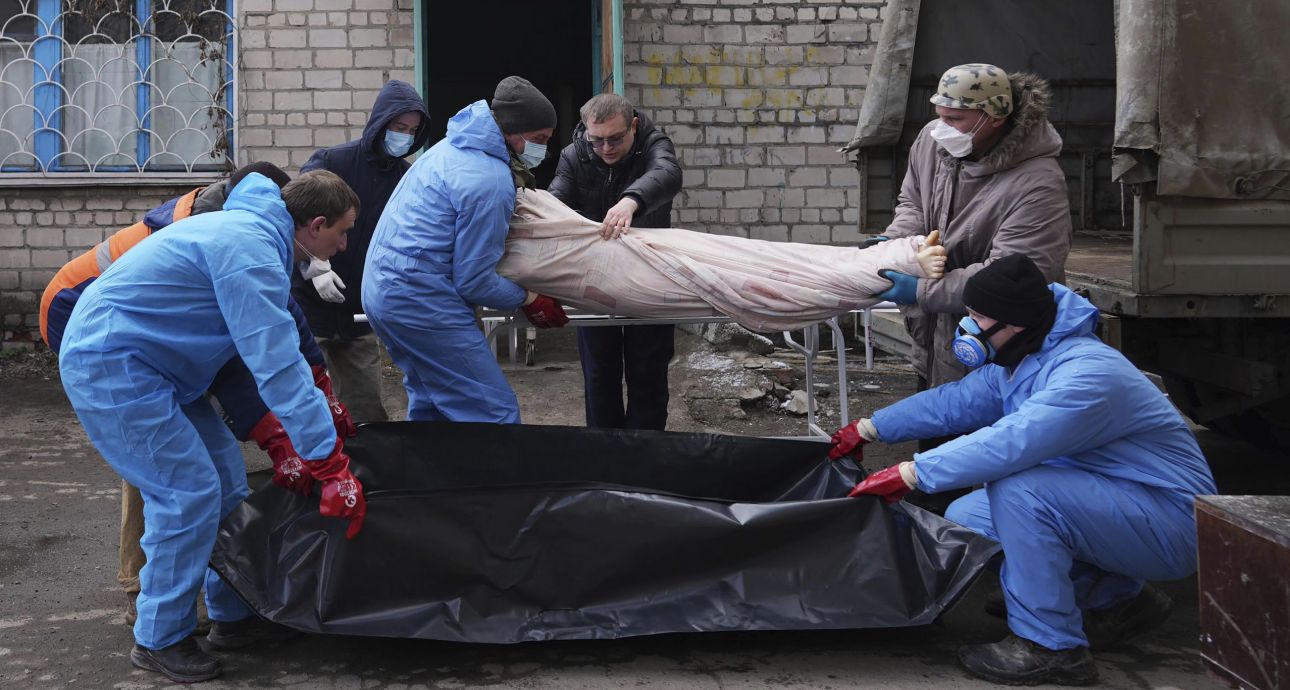
“I Loaded the Toddler’s Body Myself to Spare Younger Colleagues the Trauma”: a Mariupol Doctor’s Journal
The Regional Intensive Care Hospital of Mariupol (aka Hospital No. 2) is located in the city’s Tsentralnyi District. The injured were brought there from the very first days of the war. It is this hospital that is pictured in the photos of Evgeny Maloletka, which took the world by storm. On the 9th of March, the recently delivered women were brought there from the maternity ward of Hospital No. 3 shelled by the Russians.
Oleh Zyma is Hospital No. 2’s director for medical affairs. He documented everything that happened there starting the 24th of February: how the Russian shelled it, how the first injured died, how the bodies were hauled out of the overloaded hospital morgue, and how the Russians finally captured the hospital. Oleh left Mariupol in early April — he is abroad now. He supplemented the notes he made while in the city and compiled a journal of sorts from them. Bird in Flight publishes his text.
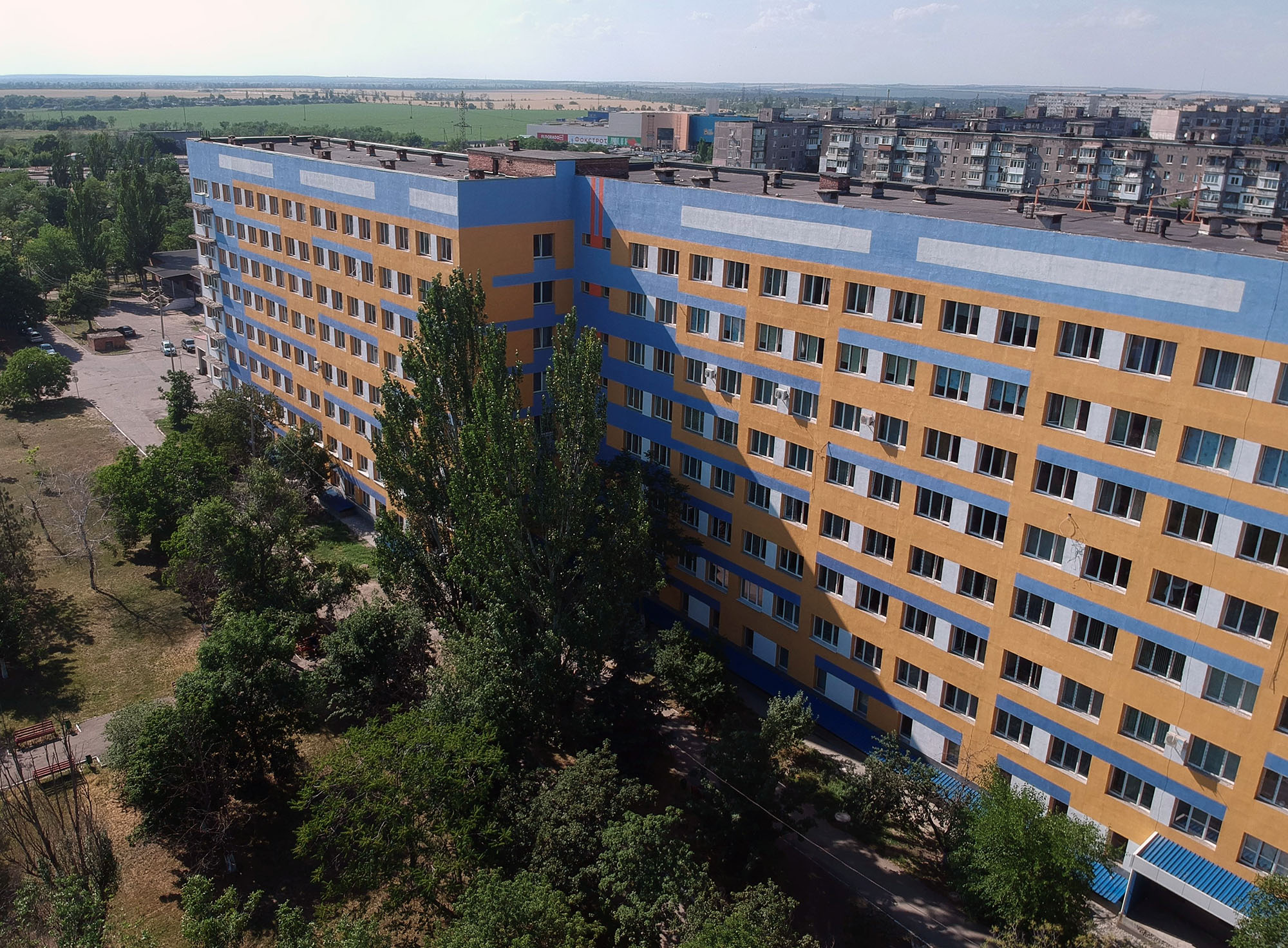
Regional Intensive Care Hospital of Mariupol before the war. Photo: Oleh Zyma / Wikimedia Commons
24th of February
Residents of the left-bank part living closer to the so-called DPR’s border were the first to suffer from the hostilities. Like in 2015, the Skhidnyi residential area was affected the most.
The 24-year-old Vitaliy was our first patient with a shrapnel wound. He had been injured in the arm when he went outdoors. We admitted 35 injured patients throughout the day, including a 15-year-old teenager.
We rearranged the way the hospital worked. The planned hospitalizations and preparations for planned surgeries were cancelled. The personnel involved in consultations and diagnostics was moved to the inpatient ward to bolster the trauma, surgical, neurosurgical, and anaesthetist teams. The injured were prioritized in the emergency room. Also, some decisions about the reorganization of hospital operations were made without approval from the city authorities to save time.
26th of February
The first shell impacts in the vicinity of the hospital were heard. It was unexpected because the hostilities previously were confined to the opposite part of the city.
Also, journalists visited us. Some stayed for a while and later filmed the destroyed residential houses and maternity ward.
27th of February
The first child died in our hospital. Evangelina was brought with chest injuries. The intensive care specialists, nurses, and ambulance personnel made every effort to save the dying patient. Still, she died before her mother’s eyes. Her death was also filmed by journalists. Later, when I got out of the city, I learned that the Russian mass media said the video was staged.
28th of February
Unable to break Mariupol’s defences in the east, the Russian troops launched an assault in the west, from the direction of Crimea. I didn’t want even to think that the Russian soldiers would reach our hospital. Also, nobody believed they would shell us.
After the blasts were heard near the Metro and Port-City malls near the hospital, we moved the patients and personnel from the upper storeys to the lower ones.
1st of March
We didn’t expect to treat soldiers, focusing on the civilians. However, Ukrainian defenders ended up in our hospital, too, because of how close to the front line it was. We administered first aid, and our surgeons operated on them if needed. After that, the soldiers were handed over to military hospitals.
The military wanted to take the hospital under their protection, but the management was against it. The hospital compound was well within view of the Russians in the western part of the city. The hospital administration was thus afraid they would open fire if they noticed any soldiers. After long talks, a military medic and five Territorial Defence Force soldiers were allocated for us.
The military wanted to take the hospital under their protection, but the management was against it.
Artillery shelled Kirovskyi residential area, injuring 25 civilians. Half of them were sent to the emergency care hospital and the rest to ours. The lifts stopped working because of electricity outages. The doctors, interns, and students who worked in the ER had to move patients between the floors on stretchers. There were so many injured that six surgical teams had to work in the surgery block at once.
Among the admitted was the teenage Denys, who had chest and stomach injuries and shrapnel pieces stuck in his limbs. The surgeons conducted two abdominal surgeries on him, each almost five hours long. We all hoped Denys would recover.
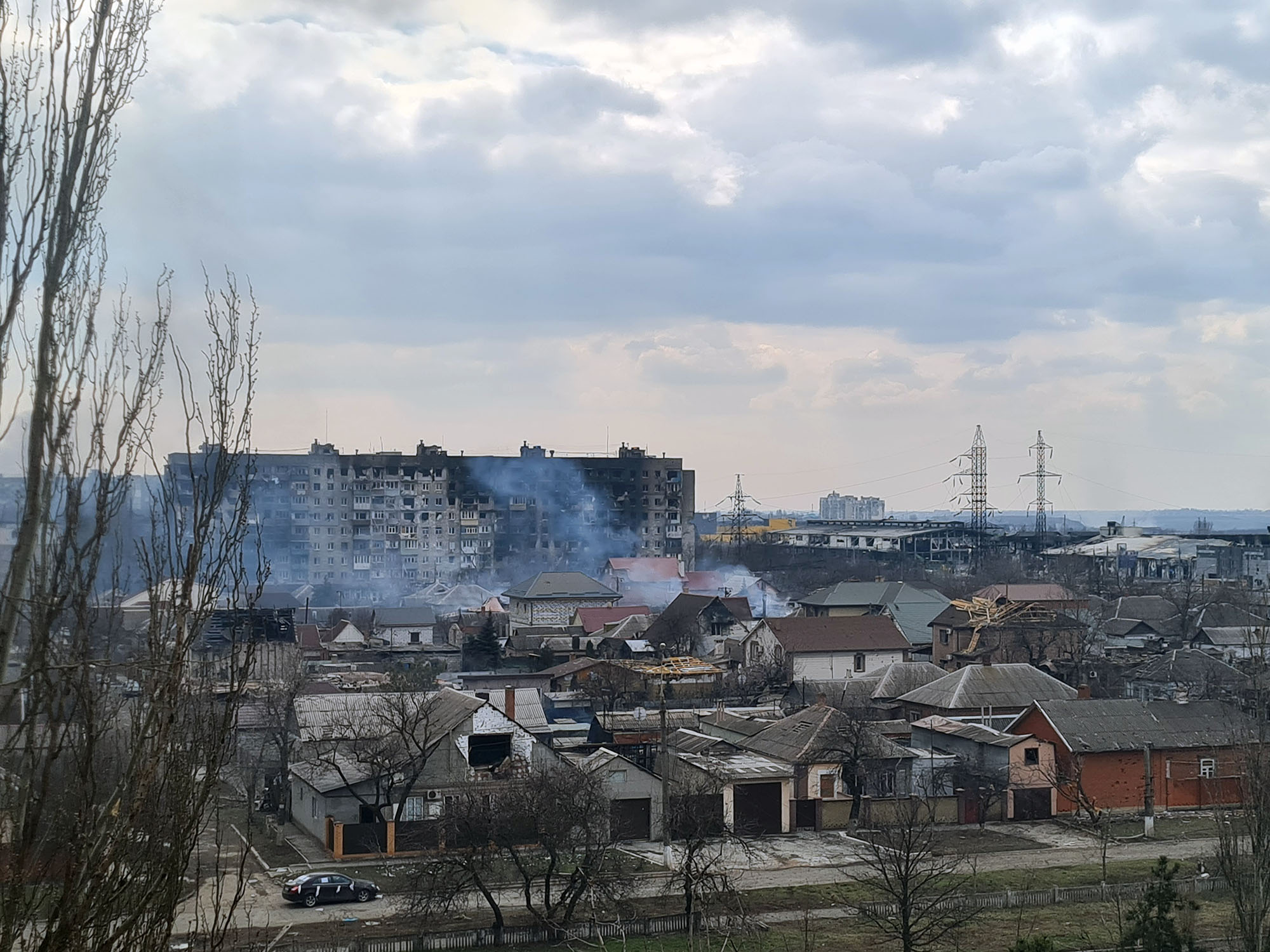
The view of the buildings on the Metropolytska Street and private houses of the Parkove village from a hospital window. Photo: Oleh Zyma
2nd of March
The primary bridges over the river were mined, and the rest were blown up, dividing the city into two parts. There was no electricity, running water, heating, or cell service anymore.
The locals came to our hospital to call firemen or the gas service team (the smell of gas was everywhere because of the gas pipeline damage). Some wanted to call an ambulance. However, we had no cell service either. So, we recommended that they bring the patients to hospitals themselves.
Russian artillery kept destroying the houses all around. People from the neighbouring quarters flocked to the hospital to warm up (the weather was cold this past March). However, we couldn’t let everyone in. Repairs in our basement were long overdue, and even one shell impact would have made it a mass grave.
Repairs in our basement were long overdue, and even one shell impact would have made it a mass grave.
We couldn’t let people remain in the corridors either, lest they interfere with our work. Besides, it was unsafe to stay in the hospital. We couldn’t cover all windows with sandbags, so glass shards would have flown in all directions in case of an explosion. The doctors risked their lives even in surgery rooms.
A man brought his son Illia and two of his friends — David and Artem. Illia died on the way to the hospital, and David and Artem were heavily injured — they survived after urgent surgeries.
Denys, who underwent two surgeries yesterday, died.
3rd of March
At 9 AM, we had the first impact on the territory of the hospital compound. The anaesthesiology ward lay in ruins, window glass broke everywhere, and the residential buildings near our hospital were on fire. The people in the know said the shell was “nothing serious” — just the 120 mm calibre. Fortunately, nobody got hurt.
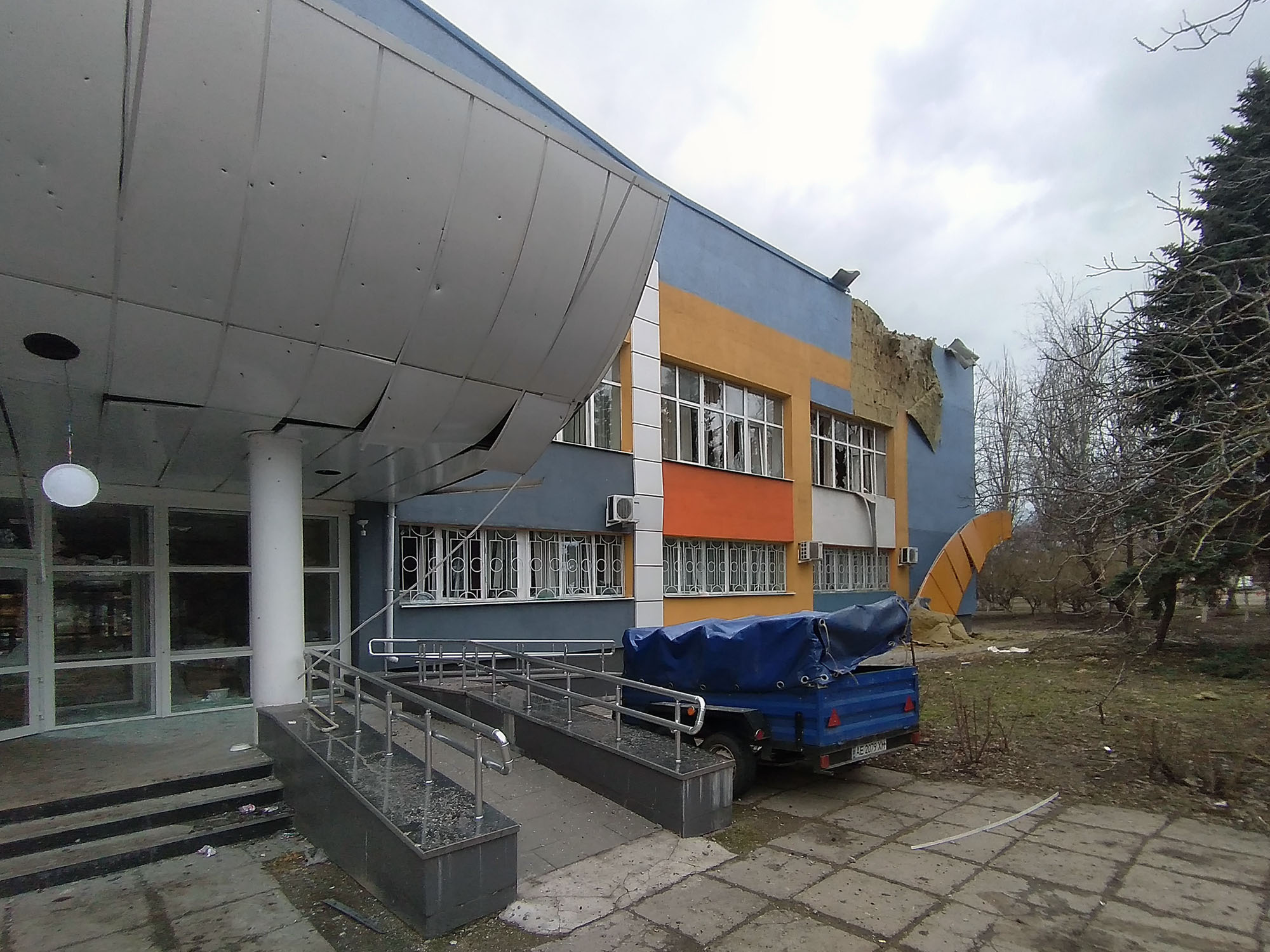
The hospital’s administrative building after the shelling. Photo: Oleh Zyma
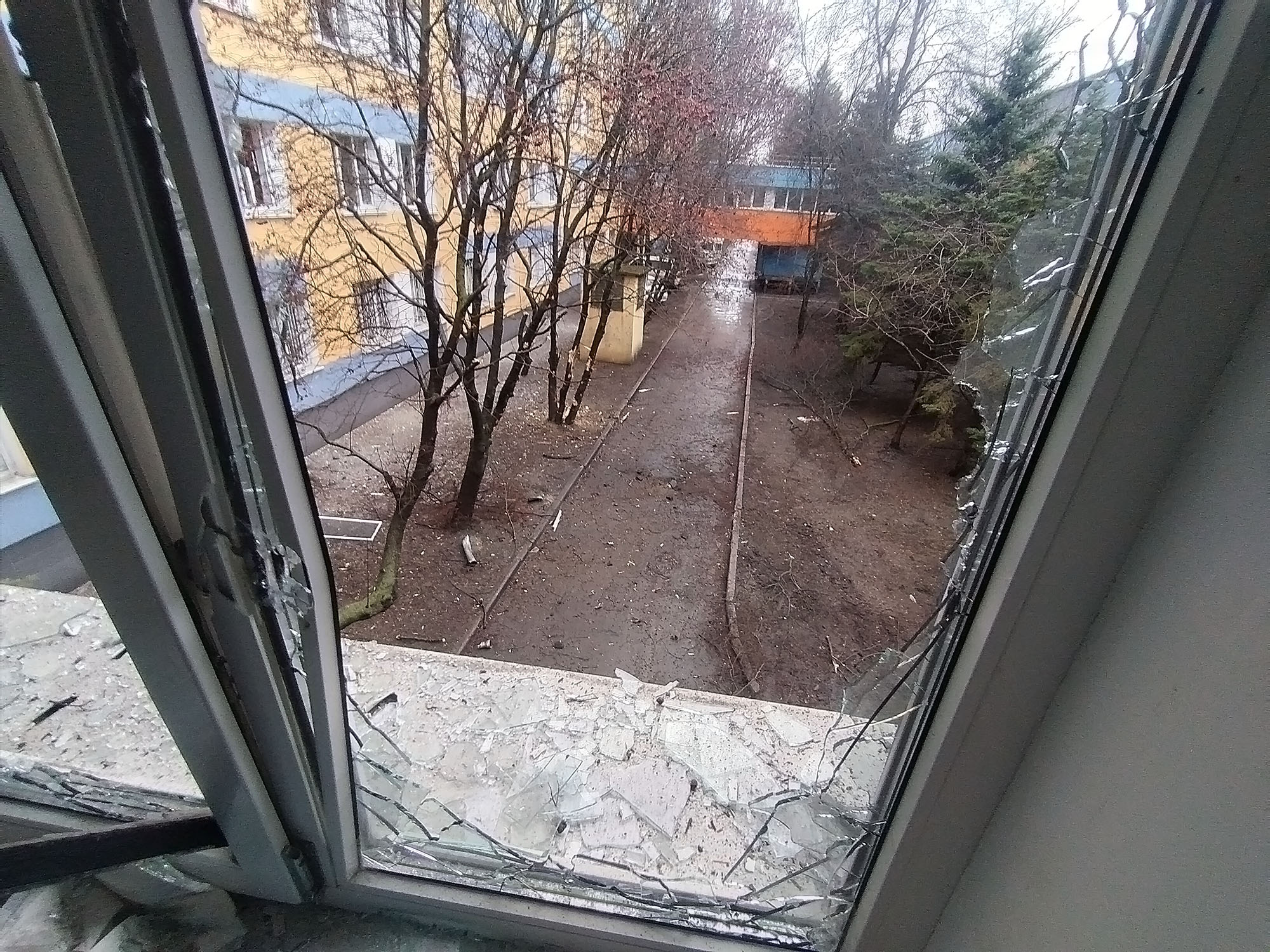
The view from inside the hospital after the shelling. Photo: Oleh Zyma
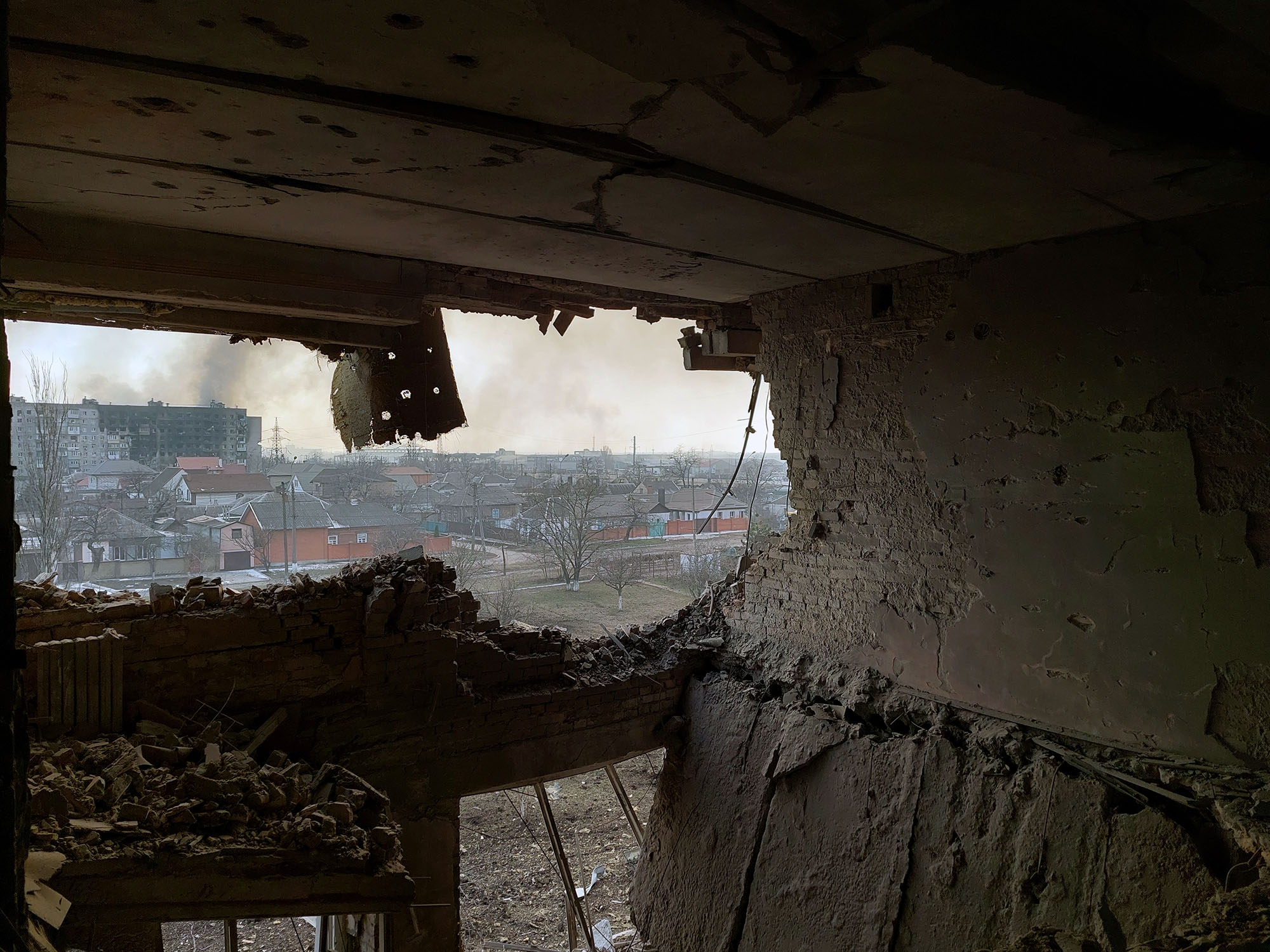
Hospital interior after the shelling. Photo: Oleh Zyma
5th and 6th of March
Seeing the addresses of the injured brought to us, we kept track of the hostilities in the city. On the 4th of March, Russian troops burnt down a high-rise in the western part of Mariupol (at 359, Shevchenka Blvd.). A tank battle broke out in the Cheremushky neighbourhood on the 5th, and Russian tanks entered Stary Krym, a village near Mariupol, on the 6th.
Seeing the addresses of the injured brought to us, we kept track of the hostilities in the city.
Among the injured, there were people who hid in houses and basements. Before that, we believed it was dangerous only outdoors or near windows. We were wrong.
8th of March
Our morgue was overflowing, the refrigerators were down, and the hospital building was partially destroyed by a shell impact. Still, locals kept bringing to us the bodies of their relatives with passport details attached on pieces of paper.
We had accumulated over 50 corpses over the 12 days of the war. There was no way of burying them in time: the only active cemetery we had in the city was too far from the hospital, in the zone of hostilities. The city authorities didn’t respond to our requests to bury people in the closed cemeteries, so we had to tackle the problem on our own. Our chief medical officer made arrangements with the road service. The workers dug a trench at the long-closed central city cemetery, and we decided to bury people there.
My colleagues and I spent the entire day taking care of the paperwork, putting bodies into bags, and loading the bags into vehicles. Among the dead were young Ukrainian soldiers, an 18-month-old toddler, and our colleague — surgeon Oleksandr Yefremovych, who died of a stroke in the first days of the war. They all now rest in a mass grave. I loaded the toddler’s body myself to spare younger colleagues the trauma. It was perhaps the hardest emotional challenge of the recent days.
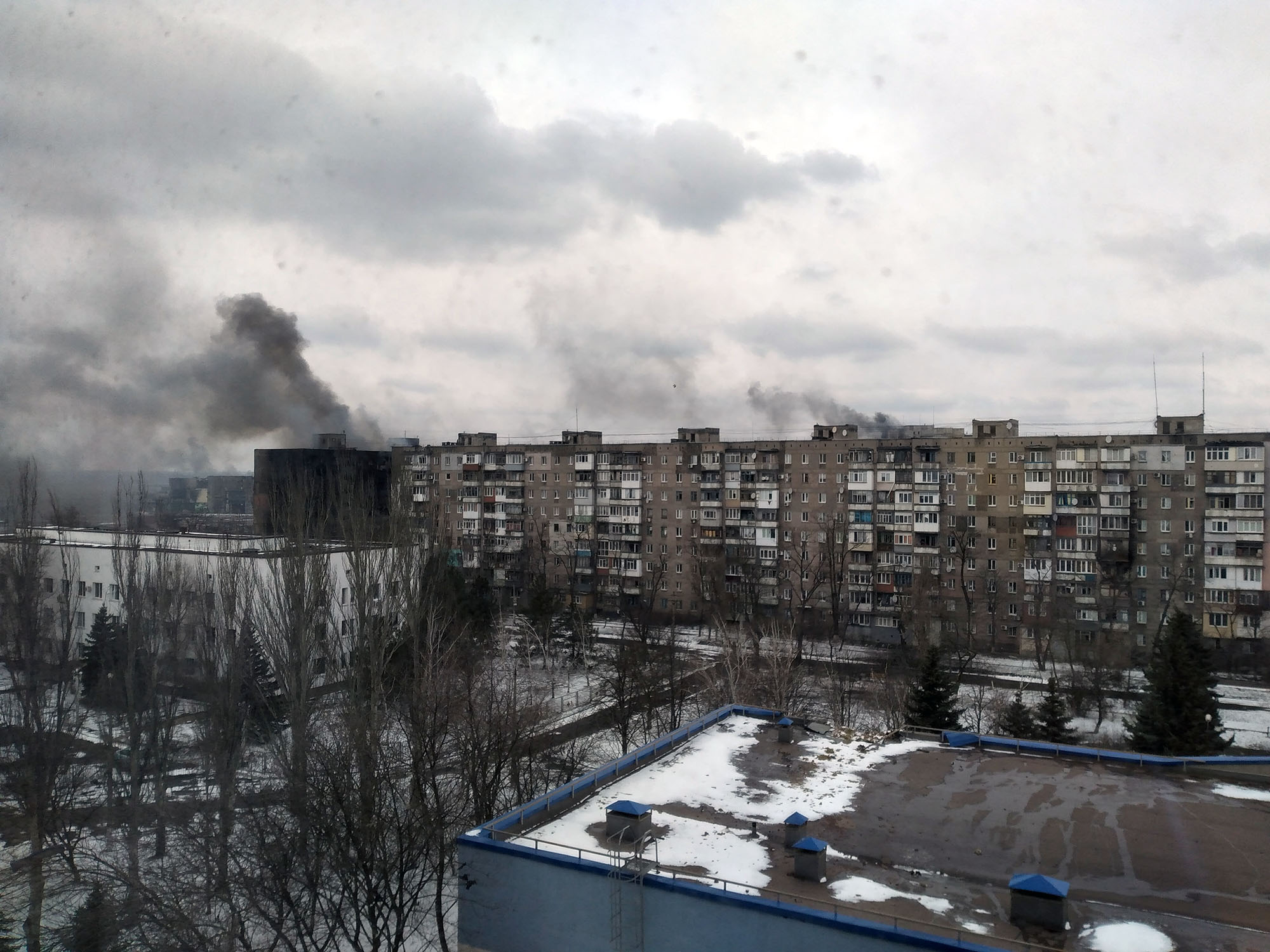
The house on Kuprin Street that caught fire as a result of shelling. Photo: Oleh Zyma
9th of March
The number of injured had grown over the past five days: 34 persons were admitted on the 5th of March, 49 on the 6th, and later over a hundred. According to the protocol, we had to resort to triage and focus on those who could be saved. However, it was hard for a doctor working in a civilian hospital to make that decision. We had to do it today.
The Russian army dropped a bomb on the maternity ward of the children’s hospital (Mariupol Local Medical Association). Sixteen recently delivered women were moved to our hospital. One of them had severe pelvis bone damage and had to be urgently operated on. However, we couldn’t save her — she died without regaining consciousness. I visited the destroyed maternity ward the day before, and I can attest to expectant mothers and medics being there, not the “ultranationalist, fascists and other elements”, as the Russian propaganda put it.
Our hospital has been shelled again. The administration building wall partially collapsed, and the cars and tanker parked on the hospital grounds caught fire. Why would the invaders do this? I guess they didn’t like the queue at our ER. There were hundreds of locals there who came to our hospital for drinking water. The frontline was close, and I was positive that the Russian soldiers did notice the crowd.
Hospital staff and patients were moved to the basement, as well as their families who had been sheltering in the hospital for several weeks already. All that time, they helped however they could, cooking, collecting and bringing warm clothes and medications, and cold-proofing the rooms.
Although the basement wasn’t prepared for work, it was safer there than elsewhere and warmer, too (the wind blew through the broken windows in the building). We redress wounds there and medicate patients. The surgeries were done in the second floor’s surgery block. It was better protected than other premises in our hospital.
10th–11th of March
After the administration building had been damaged, we couldn’t keep track of patients anymore. Here are the stats for the first 16 days of war: 617 injured were admitted into our hospital, including 414 civilians, 153 military, and 50 children.
A sniper injured one of our charge nurses when she drove to the hospital in her car. It was getting dangerous to go outdoors. The occupiers opened fire even on the ambulances — they had probably decided that the Ukrainian troops used ambulances as a cover.
12th of March
Assault troopers of the Russian army stormed into our hospital’s basement. “Get down, hands behind your heads,” they shouted. Shots were fired, and women started screaming. I don’t know what happened to the Territorial Defence Force soldiers that protected our hospital.
We managed to persuade the Russians that there were no soldiers, weapons, or tripwires in the basement. The Russians checked if what we said was true and left.
13th of March
The militia of the so-called DPR came. Tired and wearing old, dirty uniforms, they looked nowhere near as imposing as the Russians. The Russians were all tall, and the DPR militia — older people and children across the board.
The militia of the so-called DPR came. Tired and wearing old, dirty uniforms, they looked nowhere near as imposing as the Russians.
They complained to our personnel of getting only 30 ammo “for training” before being sent to Ukraine and their unit losing 27 people already. Also, they said the Russians would rebuild the ruined city in a few months.
The militia questioned our personnel to find out if there were any “Azov fighters” in the hospital. In addition, they asked for Ukrainian military uniforms and wanted to take our only intact ambulance. When people refused to “turn in any military from among the patients”, they started threatening us and put a gun to our doctor’s head.
The DPR militia took over the hospital. They bashed medical office doors and broke into the catering unit. When our chief medical officer asked where we were supposed to get water for the hospital’s needs, one of the militiamen replied, “We came here to fight, not solve your problems!” It was dangerous to argue with the armed men, so the administration found it could no longer fulfil its responsibilities.
The DPR militiamen brought civilians from the basements of nearby houses to our hospital. It was safer that way, they said, and they were right to some extent. Some locals believed, though, that the soldiers just wanted to gain access inside the residential buildings’ communal hallways without having to blow up the locked metal doors.
There was some room left only on the upper floors of the hospital, but people were afraid to go there. The DPR people couldn’t organize the hospital’s everyday operations and the treatment of its patients. We were running out of food and medications, and there was no point in staying there. However, the soldiers didn’t let us out, bringing back even those who tried to go on their own. We became hostages.
14th of March
The inflow of injured people decreased. The roads were destroyed, and the ambulances couldn’t reach our hospital anymore. About 700 people remained in the hospital. A third of them were patients, and the rest were refugees from the nearby houses, hospital staff, and their families.
15th of March
I learnt from my neighbours that a missile hit my parents’ block of flats. A few flats burned down, and all windows and doors were broken. Six residents died. My parents took shelter in the common corridor and survived. They wouldn’t have had a chance if they were two floors below.
16th of March
Since the beginning of March, 59 patients have died in our hospital, including 10 children under 18. Another 20 people died on their way to us —each from the sustained injuries.
Almost all health facilities in our city suffered from hostilities: city hospitals No. 1, 4, 9, two maternity wards, and nearly all outpatient clinics. It’s hard to estimate how many Mariupol residents died without timely medical aid.
Cover photo: Bodies are hauled from the morgue of the Regional Intensive Care Hospital in Mariupol. Evgeny Maloletka / AP Photos
New and best
